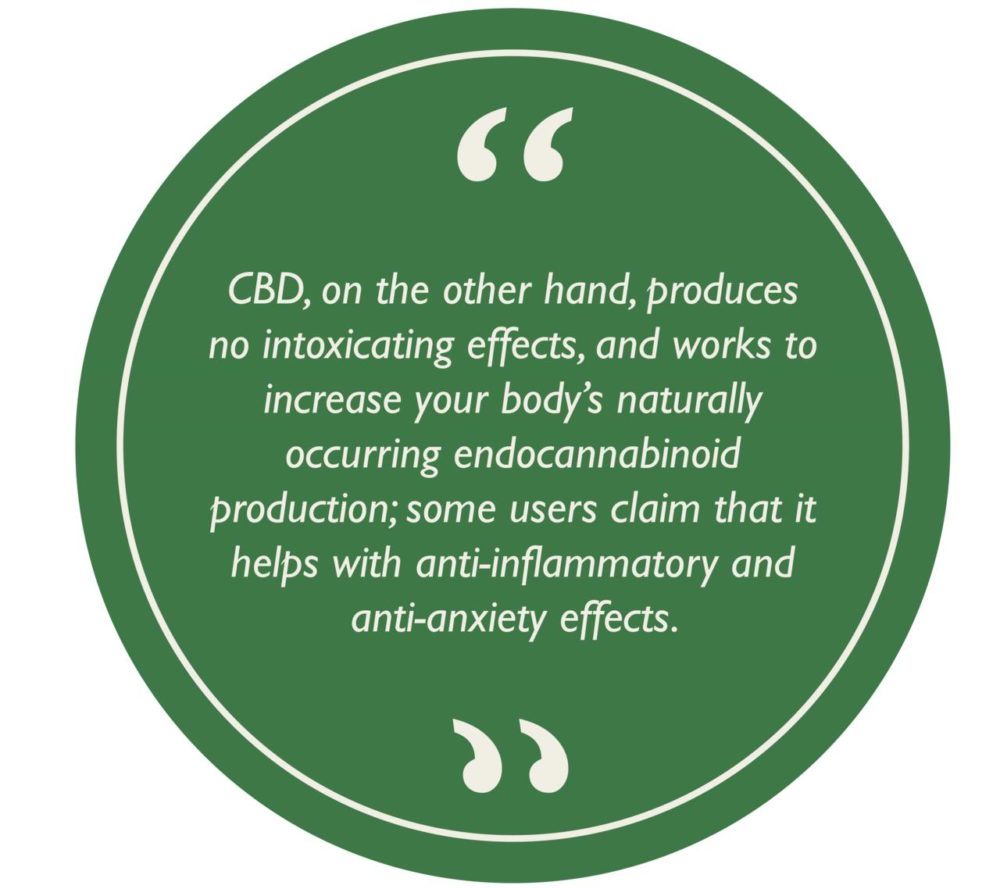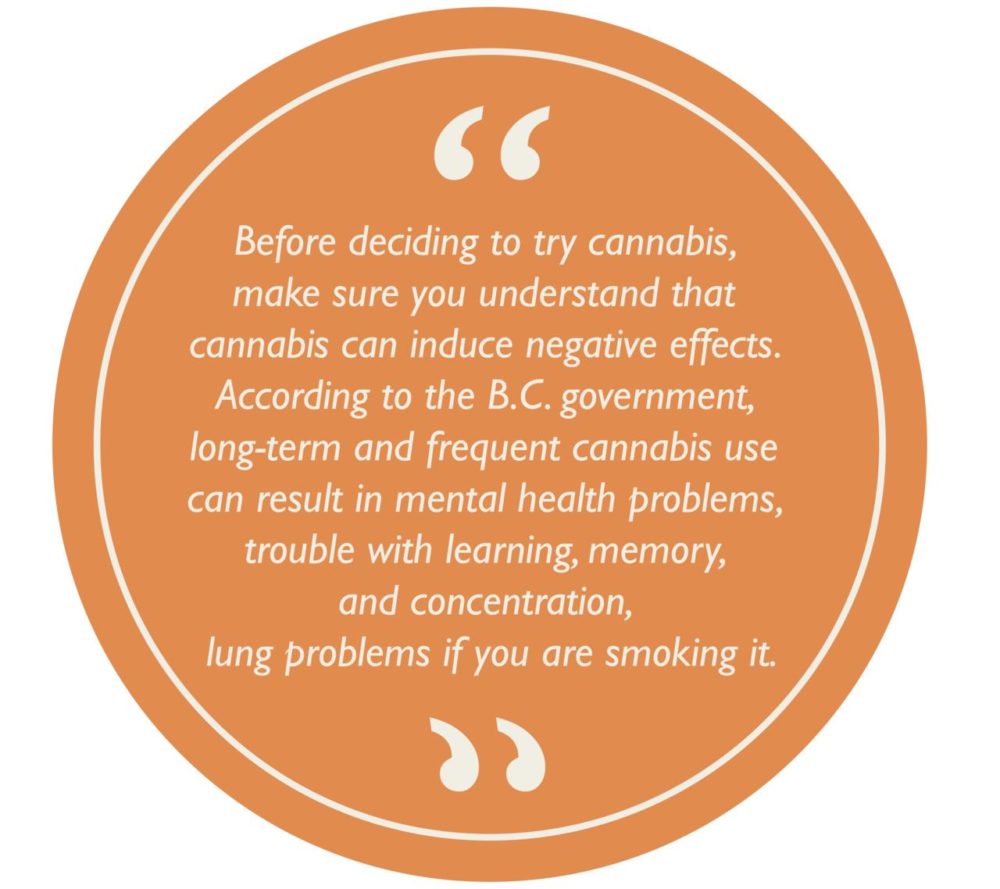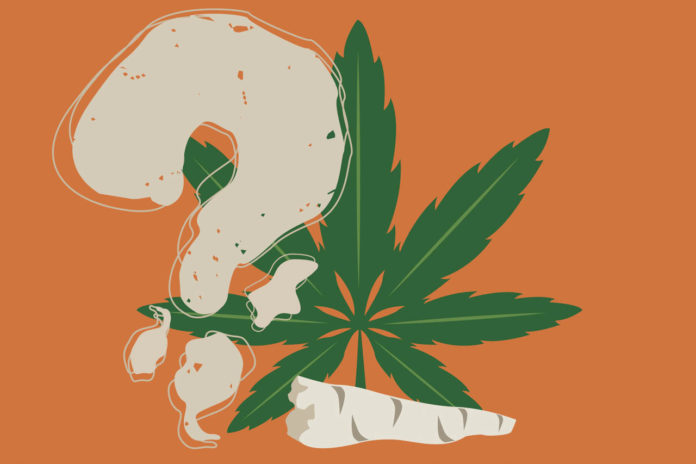After nearly three years of cannabis being legal in Canada, citizens of the Fraser Valley are becoming more familiar with visiting legal and licensed cannabis stores to access all sorts of tinctures, balms, buds, and distillates.
The Canadian cannabis industry is currently booming, and the handful of legal cannabis shops in the Valley are becoming popular hotspots for those looking to entertain themselves during quarantine. For cannabis users, this transition to legal weed has made accessing their favourite strains more convenient, but education and information on how to dose themselves with cannabis may not be as readily available.
Will New, a local cannabis user who uses both cannabis (a mixture of CBD and THC in a product) and CBD isolates for recreational and medicinal purposes, spoke to me about his experiences with finding the right doses that worked for him.
“Everyone’s tolerance is different. My first time smoking weed I greened out because the weed was too strong and I smoked so much. Some people, their tolerance for the first time might be one puff of a joint, or it might be — for CBD — 20 milligrams.”
With the industry being so new, many people are looking to try cannabis for the first time. Everyone is different, and the more educated people become about cannabis and proper dosing, the more users will begin to understand what works for them, mitigating any unwanted side effects that could potentially be harmful for one’s mental and physical health.
The following tips are just that: tips, and none of the information should be taken as medical advice. In fact, if someone at a cannabis shop is giving you medical advice, including medical advice for mental health, you should be concerned. Legal cannabis shops are for recreational purposes only. If you’re looking to try cannabis for medical reasons, you need to talk to your doctor or a registered health professional.
For those looking to experiment recreationally, it’s first important to understand what cannabis actually is, how it works in the body, and the basic components of cannabis and its impact on users. We’ll start with a breakdown of the actual plant.
What is cannabis anyway?
Cannabis is a leafy green plant which originated in central Asia and has been widely used for medical purposes for centuries, as well as for food, fibre, clothing production, ceremony, and even in funeral rites. The plant produces small hair-like strands, called trichomes, which produce a sticky resin containing the pharmacologically active compounds, most notably cannabinoids and terpenes. Terpenes create the taste and smell of a certain plant — known as a terpene profile, and are placed into categories such as earthy, floral, fruity, citrusy, cheesy, and so on. Terpenes do not get you high; rather, they are suspected to act with the psychoactive compounds of cannabis to produce varying effects. Though these theories have not been scientifically proven, some research has shown that they do act together to produce what is called Cannabinoid-Terpene Entourage Effect.

Cannabinoids are the psychoactive components of cannabis that produce feelings of being “high.” These cannabinoids actually work on your body’s natural endocannabinoid system (ECS) — meaning our bodies produce endocannabinoids naturally. Our body has cannabinoid receptors, present in both the brain and the central nervous system. Studies have suggested that the ECS affects stress recovery, and may play a role in protecting the nervous system, regulating immune system response, and impacting homeostatic balance. Although there are over 100 cannabinoids present in the cannabis plant, our main focus will be on tetrahydrocannabinol (THC), and cannabidiol (CBD) since these are the cannabinoids that are generally labelled on legal cannabis products.
THC is the cannabis compound that most people are familiar with. This cannabinoid produces the intoxicating effects associated with cannabis and acts to replace your body’s natural cannabinoids. Many people use THC for stress relief or relaxation purposes.
CBD, on the other hand, produces no intoxicating effects, and works to increase your body’s naturally occurring endocannabinoid production; some users claim that it helps with anti-inflammatory and anti-anxiety effects.
“I take CBD every day to help with general anxiety — I feel it takes away a lot of my brain fog,” New said.
When taken together, CBD can reduce the effects of THC, although it likely won’t cancel out your “high” as many people believe. In fact, one study has shown that the consumption of equivalent levels of CBD and THC actually increased peak plasma THC concentrations in the body in comparison to the consumption of THC-dominant cannabis alone, meaning that CBD may actually work to exacerbate the effects of THC.
What is the difference between sativa vs. indica vs. hybrid?
There are two types of cannabis plants: sativa and indica. While traditionally, these two plants were distinct breeds, due to recent hybridization generalizations about these two strains are difficult to make.
Sativa plants have thin, pale green leaves, and loose foliage. They are generally lower in THC and CBD content, and are often grown to make hemp products. Sativas tend to be higher in terpenes such as limonene, which has a citrusy scent and has been associated with uplifting effects for some people.
Indica plants have thick, dark green leaves, growing more densely than the sativa plant. Indicas tend to be higher in THC and CBD and are dominant in musky, earthy terpenes like myrcene. Myrcene is also associated with a more mellowing effect.
Hybrid plants are plants that have been bred to combine aspects of both the sativa and indica plant, and can include a wide variety of terpenes and levels of THC and CBD.
How do you dose yourself effectively?
Products sold in legal cannabis stores are labelled with both their THC and CBD content. This is based on THC content which is expressed in milligrams per gram (mg/g), or as a percentage (%). For example, a product containing 100mg/g of THC would mean it is 10 per cent THC, and a product with 150mg/g of CBD would contain 15 per cent CBD. Very few cannabis products contain 100 per cent THC, and for a good reason: the higher the THC content of a product, the more likely you are to experience negative effects such as anxiety or paranoia, dry mouth and red eyes, increased heart rate, and poor judgement and coordination among other things. Generally, any product with THC percentages over 17-20 per cent is considered strong. Additionally, many products are not as accurate as people think, so it’s always best to go off of personal experience and start at a low dose. For New, he found that experimenting with different strains and doses helped him narrow down which strains work for him.
“I more so go off experience. With CBD, I find you can’t take too much of it. I’ve taken up to 200 milligrams before — because there’s no psychoactive properties in it. But with marijuana I used to take edibles, and I would take way too much. I would take 100 milligrams of THC, and I was on the verge of a psychotic breakdown.”
There is also a difference in THC content for different types of cannabis products, such as dried flower versus oils. Dried flower, or “bud” is sold in an inactive state, meaning it needs to be heated — or decarboxylated — before it is active. So, on these products you will see two numbers for THC, the “total” amount, which represents the amount of THC present in its activated (heated) state, versus its pre-consumption state, which will be represented by the THC per unit number. To best choose the right dose, always use the total THC number as a reference. With oils and capsules, the THC numbers on the label will be the same, as they have already been activated in the processing of the product.
In order to properly dose yourself, you need to understand how your body reacts to the drug first. It is a good idea to choose a product with lower levels of THC, and choose a product with a balance of CBD and THC, then increase or decrease based on your reaction. Always remember that everyone reacts differently to cannabis, and consider individual factors that may effect you such as genetics, sex, health conditions, age, and even personality. You should not consume cannabis if you are pregnant or breastfeeding, planning to drive, drinking alcohol or taking other medications or drugs, and especially if you are a minor since your brain is still developing, therefore increasing the chance of permanent unwanted side effects. To avoid other unwanted and negative effects of cannabis consumption you should choose products that are edible instead of smokable, don’t inhale deeply or hold your breath, limit your use, and don’t engage in risky behaviours such as driving while under the influence.
What do I do if I’m too high?
If you happen to have taken too much cannabis: don’t panic. It happens. Try to keep yourself calm by taking deep breaths, reminding yourself that the high won’t last, and try to get yourself into a calming environment outside in nature, spend time with a safe friend, or nest up on the couch and watch a comfort movie with some good snacks. You can also try to counteract the high with CBD, such as in the form of an oil. The good news is that no one has died of a marijuana overdose, so give it time, be safe, and you’ll be okay.
What’s the downside?
Before deciding to try cannabis, make sure you understand that cannabis can induce negative effects. According to the B.C. government, long-term and frequent cannabis use can result in mental health problems, trouble with learning, memory, and concentration, lung problems if you are smoking it. Other possible serious side-effects include cannabis use disorder (trouble controlling cannabis use even though you are experiencing negative effects), and cannabinoid hyperemesis syndrome (CHS) which can be life-threatening and causes severe nausea and vomiting.

One study examining the adverse health effects of cannabis use saw that regular marijuana use was associated with an increased risk of mental health issues such as anxiety, schizophrenia, psychosis, and depression, but that causation has not been proven, and the use of cannabis could in fact, be a result of mental illness. The study stated that about 9 per cent of people who experiment with cannabis will become addicted, with that number increasing to 25 to 50 per cent if the individual uses it daily.
It was also noted that the THC content of cannabis has dramatically increased in recent decades:
“The THC content, or potency, of marijuana, as detected in confiscated samples, has been steadily increasing from about 3 per cent in the 1980s to 12 per cent in 2012. This increase in THC content raises concerns that the consequences of marijuana use may be worse now than in the past and may account for the significant increases in emergency department visits by persons reporting marijuana use and the increases in fatal motor-vehicle accidents.”
Just one more reason to try and keep the THC doses low and infrequent. The majority of these negative health outcomes were seen in long-term and frequent users, so the average Joe trying cannabis for the first time should be fine. If you are still concerned about trying it, speak with your doctor first.
How should I take cannabis?
Choosing a form of consumption is an exciting but also important factor when deciding to use cannabis. Cannabis can be consumed orally, smoked, or applied directly to the exterior of the body. It is up to the consumer to decide what works best for them, but options for smoking are the most harmful and consumers should be aware of this. Smoking options include ground cannabis — often referred to as bud — that has to be rolled into a “joint.” Other options for smoking dried flowers include using bongs or pipes. There are other forms of smokable cannabis that includes concentrates such as oils, butters, and “glass” or “shatter” that is burned at a high heat through a vapor pen or dab rig and inhaled.
Edible cannabis comes in many forms, most often in the form of a baked good or candy, but also as teas, oils, capsules, and tinctures. Edible cannabis takes longer to work as well; a good estimate is between 30 minutes and 2 hours, but it could take as long as 4 hours to kick in — so keep that in mind, as many people make the mistake of over dosing themselves when they don’t initially feel the effects and take more.
Other cannabis products include bath bombs, creams and lotions, and topical oils.
Remember, cannabis is a drug, and it is best used in moderation. Make sure you are researching the products you want to consume and understanding how cannabis will impact you both short and long-term. Responsible use is dope — smoke on, friends.
Image: Elyssa English/The Cascade
Darien Johnsen is a UFV alumni who obtained her Bachelor of Arts degree with double extended minors in Global Development Studies and Sociology in 2020. She started writing for The Cascade in 2018, taking on the role of features editor shortly after.
She’s passionate about justice, sustainable development, and education.



